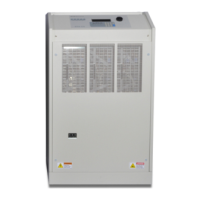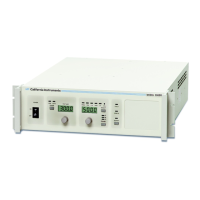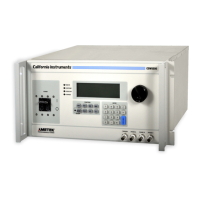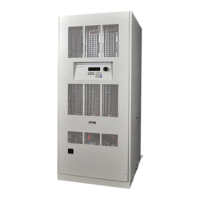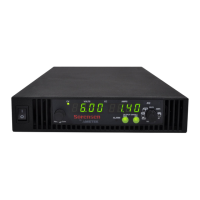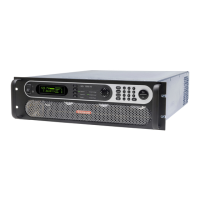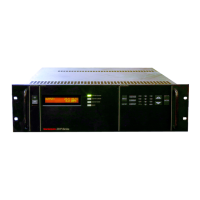User Manual – Rev BE AMETEK Programmable Power
MX Series 179
4.7 Transient Programming
4.7.1 Introduction
Transient programming provides a precise timing control over output voltage
and frequency changes. This mode of operation can be used to test a product
for susceptibility to common AC line conditions such as surges, sags, brownouts,
and spikes. By combining transient programming with custom waveforms [3Pi
Controller only], virtually any AC condition can be simulated on the output of
the AC source.
The default voltage mode is FIXED which means the output voltage is constant
and remains at the level set by the user. Changes made to the output voltage
made from the PROGRAM 1 menu take effect immediately. In front panel
operation mode, the voltage and frequency slew rates (rate of change) are
always at their maximum of 1E9 V/s and 1E9 Hz/s. Slew rate programming is
only possible over the remote-control interface. On power up, the AC source
always reverts to the maximum slew rate for both voltage and frequency.
4.7.2 Using Transient Modes
The voltage can be programmed in the following transient operating modes:
STEP causes the output to permanently change to its
triggered value.
PULSE causes the output to change to its triggered value for a
specific time, as determined by the Pulse menu
parameters.
LIST causes the output to sequence through several values,
as determined by points entered in the List menu.
FIXED disables transient operation for the selected function.
4.7.3 Step Transients
Step transients let you specify an alternate or triggered voltage level that the
AC source will apply to the output when it receives a trigger. Because the
default transient voltage level is zero volts, you must first enter a triggered
voltage before you can trigger the AC source to change the output amplitude.
Step transients can only be programmed through the bus, not the front panel.
Refer to the SCPI Programming Manual for more information about
programming Step transients and triggers.
